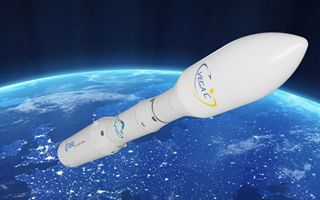(Finance) – A redesigned version of the Zefiro-40 solid rocket motor, the second stage of the Vega-C launcher, was successfully tested today for the second time at the Salto di Quirra test bed, in Sardinia. This second test, he explains Aviation in a note, follows the first engine firing in May 2024 and concludes the qualification tests for the new engine nozzle design
Zephyr-40.
Initial post-test analysis indicates that the new nozzle design and motor performed as intended. Engineers are working to evaluate the engine’s performance.
While the previous test, held last May, was carried out at high operating pressure and for a limited combustion time, today’s test was conducted at lower operating pressure but for a longer combustion time, in line with what expected. The two ignition tests are a standard procedure in the preparation of solid rocket motors and
will allow Vega-C to return to flight by the end of 2024.
The Zefiro-40 is a 7.6 meter tall engine, loaded with over 36 tons of solid propellant and is just one of three solid propulsion stages used by Vega-C. For this test the engine was installed on a horizontal test bench. Zefiro-40 is developed and produced by Avio in the Colleferro plant in the province of Rome.
Goodbye Vega, welcome Vega-C
Vega-C is the evolution of the versatile family of Vega rockets, specialized in bringing Earth observation satellites into orbit. The first Vega was launched in 2012 and flew 22 times in 12 years; its last flight took place on September 4, launching the Sentinel 2C satellite perfectly into orbit.
Vega-C is preparing to take up the legacy of Vega, ensuring Europe has independent and versatile access to space, integrating the Ariane family of rockets to launch any type of satellite into orbit.
Vega-C offers increased performance and load capacity, as well as improved competitiveness. Operating from the European Spaceport in French Guiana, from the same launch site as Vega, the launcher strengthens Europe’s autonomy in space by supporting new mission possibilities and includes two new solid propulsion stages, an improved upper stage and a new fairing, as well as new ground infrastructure.
